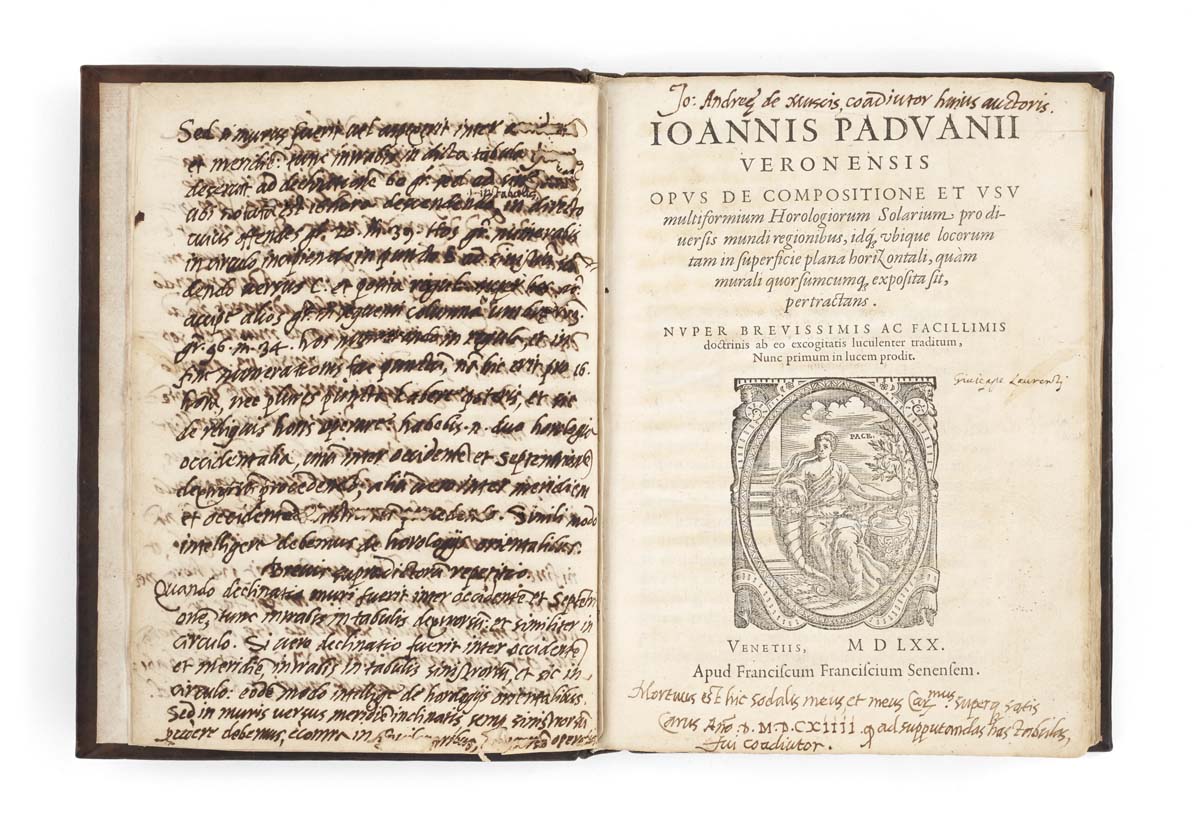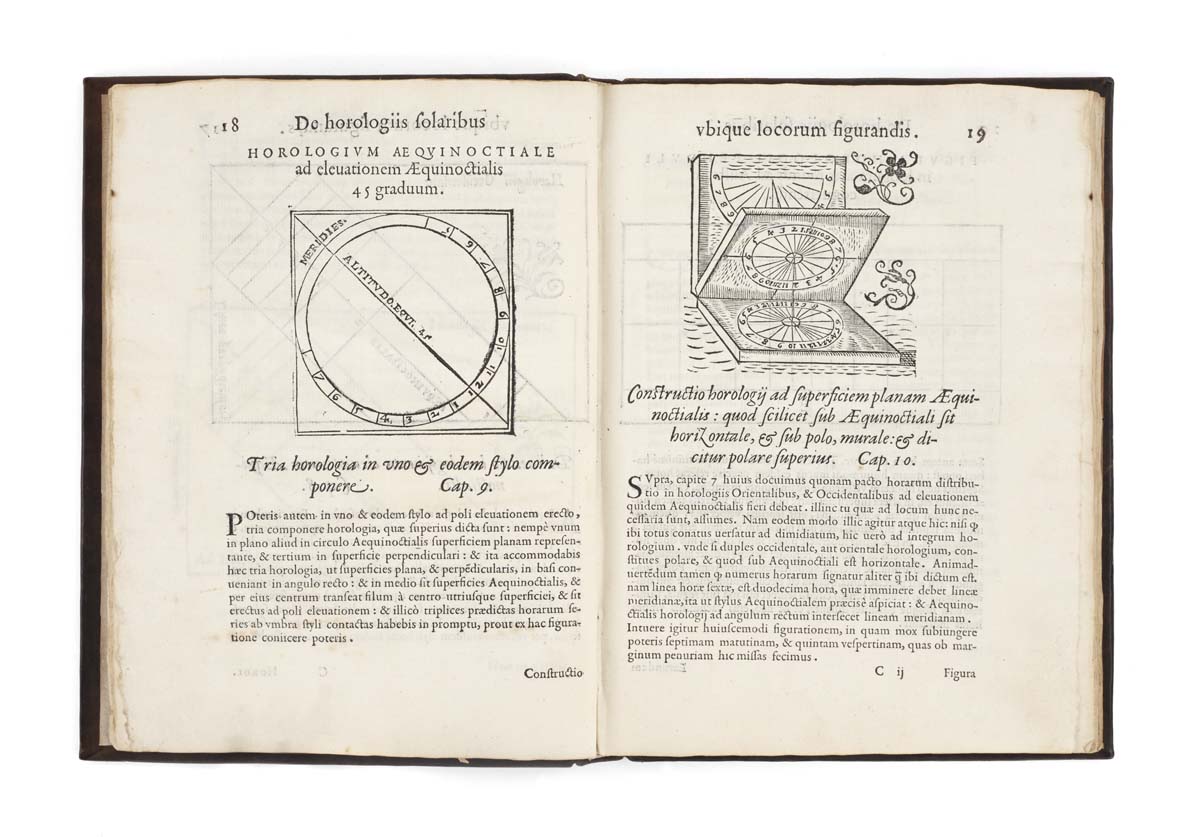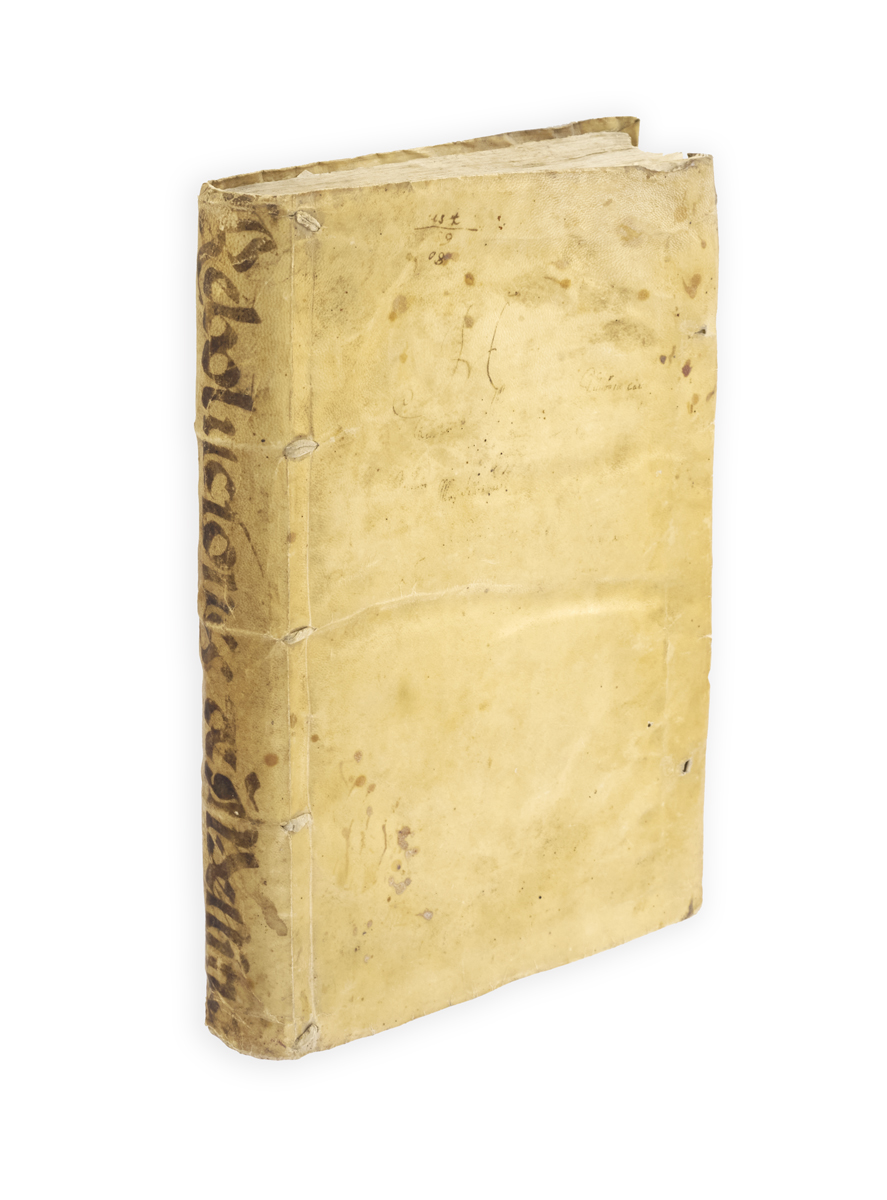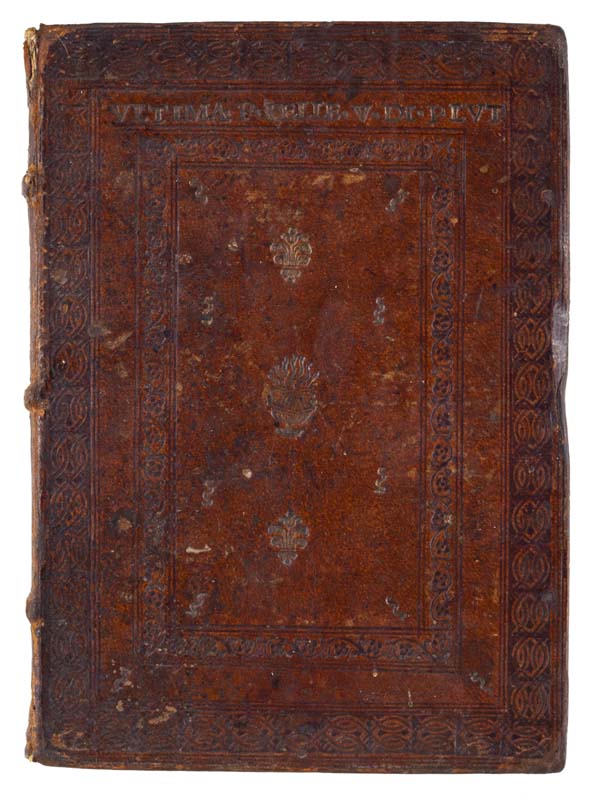

ANNOTATED BY THE AUTHOR'S COLLABORATOR
PADOVANI, Giovanni.
Opus de compositione et usu multiformium horologiorum solarium pro diversis mundi regionibus, idque ubique locorum tam in superficie plana horizontali, quam murali quorsumcumque exposita sit, pertractans … Nunc primum in lucem prodit.
Venice, Francesco de Franceschi, 1570.
4to, pp. [8], 110, [2]; woodcut device to title, engraved initials, tables and woodcut diagrams throughout; minute hole to K2 (not touching text), light foxing to sig. M, a few small marks, otherwise an excellent copy in modern dark brown calf, covers panelled and ornamented in blind and lettered with author, title and date; extremities lightly rubbed; ownership inscription of Johannes Andrea de Muscis (see below), with his occasional marginal notes and two leaves of his manuscript notes bound before the title (quite fragile, ink corroded causing a few small holes); signature of Giuseppe Laurenti to title, acquisition note to rear free endpaper ‘Compro a di 3 Marzo 1608’.

Added to your basket:
Opus de compositione et usu multiformium horologiorum solarium pro diversis mundi regionibus, idque ubique locorum tam in superficie plana horizontali, quam murali quorsumcumque exposita sit, pertractans … Nunc primum in lucem prodit.
Scarce first edition of Padovani’s treatise on sundials, providing illustrated instruction on the use of various horizontal and vertical sundials and on calculating latitude, this copy owned and annotated by the author’s friend and collaborator Johannes Andrea de Muscis.
A second edition appeared in 1582. Padovani was an Italian mathematician, astronomer, and musical theorist from Verona, a student of Pietro Pitati, and the author of numerous works relating to time.
The owner and annotator of this copy gives his name at the head of the title-page as ‘Jo. Andrea de Muscis’, describing himself as ‘coadiutor huius auctoris’. He provides more detail in a note below the imprint: ‘Mortuus est hic sodalis meus … an[n]o d. MDCXIIII q. ad supputandas has tabulas fui coadiutor’. Johannes Andrea de Muscis assisted Padovani in the computation of the numerous tables which embellish the text, giving latitudes of European cities, data for spacing hour markers, occidental and oriental declinations, and altitudes.
On two leaves bound before the title-page, de Muscis has added detailed notes providing clarification on using the printed tables of declination, headed ‘Sumariu[m] in tabulis pro declinatione muri ta[m] ad ortu[m] q[uam] ad occasu[m] platitudine 45 graduu[m]’, ending with a brief summary (‘Breuis supradictoru[m] repetitio’). These notes again indicate de Muscis’s close relationship with the author, of whom he writes, ‘hic bonus vir amicus meus, cu[m] quo stricte conversabam et sepissime de hac re adlocutus sum … bene docuit varia componere horologia’. The few notes within the text in de Muscis’s hand include one correcting two dates in accordance with Gregorian calendar reform, and another annotating the diagram on p. 41.
EDIT16 CNCE 27991; Houzeau & Lancaster 11375 (‘belle édition, rare’); Riccardi I.II, 232 (‘bella e rara ediz.’); USTC 846034.

